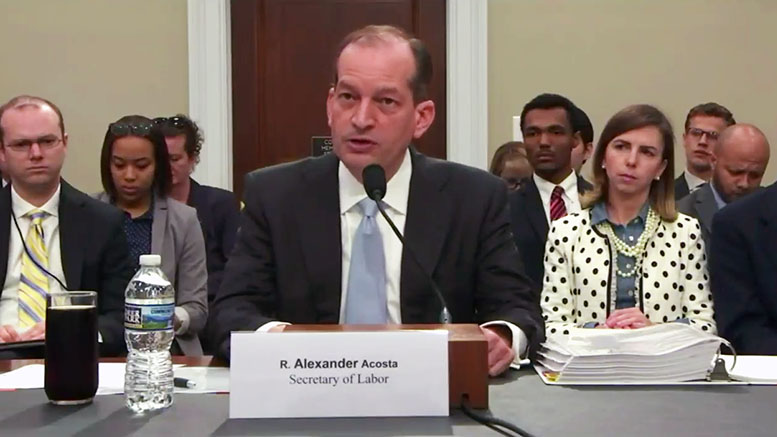Apprenticeships continue to be a focus for the Trump administration as an important option to provide skills training for available U.S. jobs.
In his testimony Wednesday before a House appropriations subcommittee on the president’s proposed fiscal year 2018 budget, U.S. Labor Secretary Alex Acosta emphasized the value of apprenticeships in providing students with an opportunity to “earn while they learn.” He noted that the programs are good for students because they learn on the job, connect with potential employers and are paid. And they also can sometimes receive college credit for their participation. It’s also a win for employers, who are able to assess and train prospective workers.
“It’s a proven strategy that works,” Acosta said.
Earlier in the day, Reed Cordish, assistant to the president for intragovernmental and technology initiatives, outlined to business leaders that Trump next week will announce plans to expand apprenticeships, which touch on proposed changes to accreditation and student aid programs to promote the effort. He will also talk about community colleges’ efforts to train workers in order to increase hiring and job growth. Trump is expected to deliver the speech June 14 at the Labor Department.
A disconnnect
The U.S. unemployment rate is at a 16-year low at 4.3 percent, Acosta told House appropriators, but there are still six million job openings in the U.S. Job training efforts needs to better align “jobs that exist” with quality programs, he said.
A Business Roundtable report on the lack of skilled workers released Wednesday said that the gap is due to poor labor market information, difficulty in finding the right kind of training needed for specific occupations, and the cost of learning a specialized skill without a clear path to post-training employment. (The report also highlighted successful efforts led by employers, which include community college partnerships.)
Several Democrats on the House panel asked Acosta why the president wants to cut federal job training programs if employers are clamoring for more skilled workers. In his FY18 budget, Trump proposes to decrease funding for Workforce Innovation and Opportunity Act (WIOA) job training and employment services formula programs by 39 percent, or $1.3 billion. It calls on states, localities and employers to cover these costs. (Apprenticeship programs would essentially be level-funded.)
Acosta responded that are too many federally funding job training programs that are duplicative, unnecessary or not effective.
Not enough women in programs
Rep. Nita Lowey (D-New York) noted that women — who make up half the U.S. workforce — comprise less than 10 percent of registered apprenticeships. It’s a statistic that hasn’t budged in two decades, she said.
Acosta acknowledged that more has to be done to increase the number of women and minorities in apprenticeships. This could be done by expanding apprenticeships beyond the traditional fields that offer them, such as the building trades.
“We should be doing that with existing programs already,” he said.

